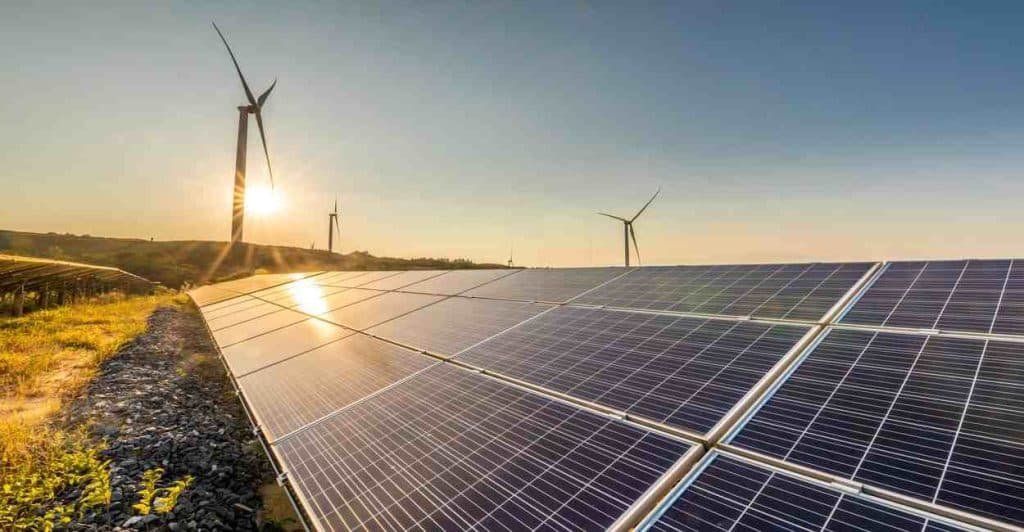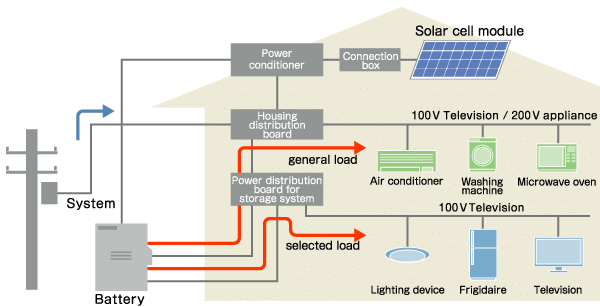Welcome to a deep dive into the world of solar power as we unravel the critical infrastructure that powers the sustainable energy revolution. In this exploration of “Unleashing Solar Power,” we’ll navigate the essential components and technologies shaping the solar energy landscape. From photovoltaic systems to grid integration, join us on a journey to understand the pivotal elements propelling us toward a cleaner, greener future. Embrace the potential of solar power and explore the transformative infrastructure that is reshaping the way we harness and utilize renewable energy.
Solar Photovoltaic (PV) Systems: The Core of Solar Energy
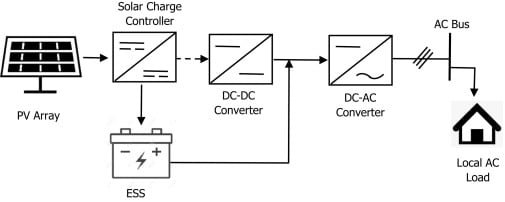
At the heart of solar energy infrastructure are Photovoltaic (PV) systems. These setups comprise solar panels that transform sunlight into electricity. The effectiveness of a solar PV system hinges on multiple factors, including panel type, orientation, and geographical exposure to sunlight.
Solar Inverters: Converting Sunlight into Usable Power

While solar panels capture sunlight, the pivotal role of solar inverters is to convert the direct current (DC) generated into alternating current (AC), the form of electricity used in homes and businesses. String inverters and microinverters, the two primary types, offer distinct advantages based on the scale and design of the solar power system.
Battery Storage: Reserving Sunlight for a Cloudy Day

Addressing the intermittency challenge of solar energy, battery storage systems store excess energy produced during sunny periods for later use. This technological advancement not only ensures a consistent power supply during cloudy days or nights but also enhances the overall reliability of solar energy.
Mounting and Tracking Systems: Aligning for Maximum Exposure
To optimize the efficiency of solar panels, precise positioning and tracking systems are indispensable. Mounting structures provide support and secure installation, while tracking systems, be they single-axis or dual-axis, enable panels to follow the sun’s movement, maximizing exposure and energy capture throughout the day.
Electrical Wiring and Interconnection: Ensuring Seamless Energy Flow
Behind the scenes, a network of electrical wiring and interconnection components guarantees the smooth flow of electricity from solar panels to end-users. Proper wiring, connectors, and inverters play a pivotal role in maintaining the integrity of the solar power system and transmitting the generated electricity to the grid or on-site power distribution systems.
Grid Connection: Embedding Solar Power into the Energy Landscape
Integrating solar power systems into the electrical grid facilitates the distribution of excess energy and allows users to draw power when solar production is insufficient. This integration demands adherence to regulatory standards and often involves the installation of net metering systems, enabling a two-way flow of electricity between the solar installation and the grid.
Monitoring and Control Systems: Elevating Performance Optimization
For efficient operation and maintenance, solar energy infrastructure relies on advanced monitoring and control systems. These systems offer real-time data on energy production, system health, and potential issues, empowering prompt troubleshooting and optimization. With technological advancements, artificial intelligence and machine learning increasingly enhance the predictive capabilities of these monitoring systems.
Statistical Insight: According to a study by the International Energy Agency (IEA), the global solar PV capacity is projected to triple by 2030, reaching over 2 terawatts.
Solar Thermal Systems: Capturing Heat for Power Generation
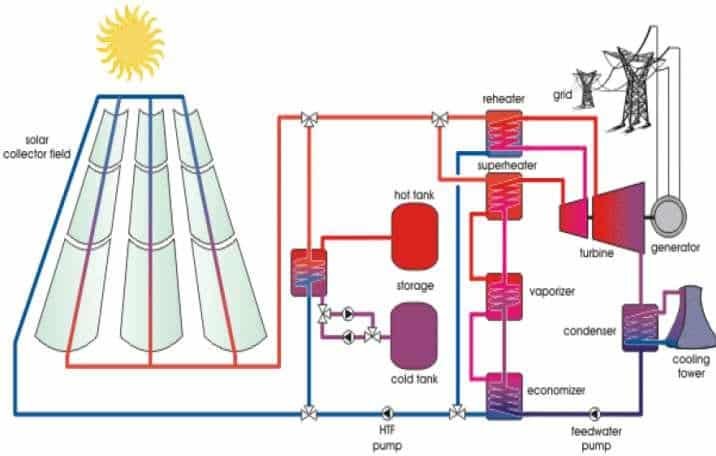
In addition to photovoltaic systems, solar thermal systems utilize the sun’s heat to generate electricity. Using mirrors or lenses to concentrate sunlight onto a small area, these systems create intense heat, which can then be used to produce steam and drive turbines. Solar thermal power plants are particularly effective in areas with high direct sunlight.
Weather Monitoring Systems: Adapting to Changing Conditions
Solar energy infrastructure necessitates accurate weather monitoring systems to anticipate and adapt to changing weather conditions. Cloud cover, rain, and temperature fluctuations can impact the performance of solar panels. Integrating weather forecasting technology allows for proactive adjustments, ensuring a consistent and reliable energy output.
Environmental Impact Assessment: Balancing Benefits and Footprint
Prior to implementing solar energy infrastructure, conducting an environmental impact assessment is crucial. This involves evaluating potential ecological effects, considering factors such as land use, wildlife impact, and the production and disposal of solar components. Striking a balance between the environmental benefits of solar energy and its footprint ensures a sustainable approach to renewable energy.
Smart Grid Integration: Enhancing Energy Management
The synergy between solar energy infrastructure and smart grid technology is reshaping how we manage and distribute power. Smart grids enable real-time communication between energy producers, consumers, and the grid itself. By integrating solar power into smart grids, we enhance energy management capabilities, allowing for dynamic adjustments based on demand, weather conditions, and overall grid health.
Solar Tracking Innovations: Following the Sun’s Journey
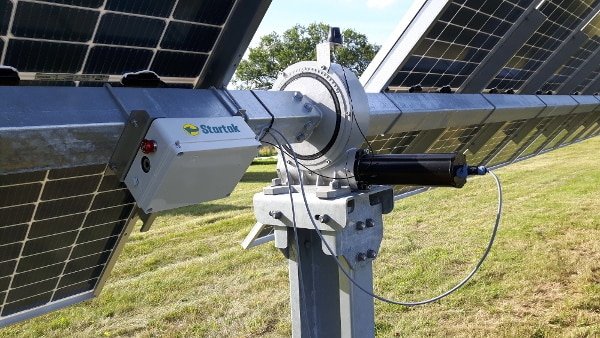
In the quest for optimal energy capture, ongoing innovations in solar tracking systems are transforming the landscape. Dual-axis trackers, which pivot both horizontally and vertically, offer unprecedented precision in following the sun’s trajectory. These advancements significantly boost the efficiency of solar panels by ensuring they are always positioned at the perfect angle for maximum sunlight absorption.
Solar-Powered Water Pumping Systems: Greening Agriculture
Beyond electricity generation, solar energy infrastructure finds application in sustainable agriculture. Solar-powered water pumping systems utilize energy from the sun to pump water for irrigation, reducing dependence on traditional fossil fuel-powered pumps. This not only contributes to environmental conservation but also provides a reliable water source for remote or off-grid farming communities.
Solar Desalination: Addressing Water Scarcity
In regions facing water scarcity, solar desalination plants offer a sustainable solution. By harnessing solar energy to power the desalination process, these plants convert seawater into freshwater, providing a renewable source of clean water for coastal communities. This innovative use of solar energy tackles two critical challenges: water scarcity and dependence on non-renewable water desalination methods.
Solar-Powered Electric Vehicles Charging Stations: Driving Green Mobility
The integration of solar energy into electric vehicle (EV) charging infrastructure marks a significant stride towards greener mobility. Solar-powered charging stations utilize sunlight to generate electricity for EVs, reducing the environmental impact of transportation. This approach aligns with the broader goal of creating a holistic renewable energy ecosystem that spans electricity generation to sustainable transportation.
Solar Nanotechnology: Miniaturizing Efficiency Gains
At the forefront of solar innovation is the application of nanotechnology to enhance the efficiency of solar cells. Nanomaterials, such as quantum dots and nanowires, are being employed to capture and convert sunlight more effectively. This groundbreaking approach enhances energy conversion, supports miniaturization of solar components, paving the way for versatile, aesthetically integrated solar solutions.
Solar-Powered Disaster Recovery Centers: Empowering Resilience
In disaster-prone regions, integrating solar power into emergency response centers ensures a reliable and sustainable source of energy during crises. Solar-powered disaster recovery centers can operate independently of the grid, providing essential services such as lighting, communication, and medical support. This decentralized energy approach enhances community resilience and accelerates recovery efforts in the aftermath of natural disasters.
Solar-Powered Refrigeration: Extending the Cold Chain Sustainably
In remote areas lacking electricity, solar refrigeration crucially preserves perishable goods. These systems leverage solar energy to maintain low temperatures, extending the shelf life of food and vaccines. By addressing the challenges of refrigeration in areas with unreliable power sources, solar-powered solutions contribute to food security and healthcare accessibility.
Solar-Powered Wi-Fi Connectivity: Bridging the Digital Divide
Solar energy infrastructure extends beyond electricity generation to bridge the digital divide in underserved communities. Solar-powered Wi-Fi connectivity solutions leverage the sun’s energy to power communication hubs, providing internet access to areas with limited or no connectivity. This not only enhances educational opportunities but also fosters economic development by connecting communities to online resources and markets.
Solar Art Installations: Fusing Aesthetics with Sustainability
In a harmonious blend of art and technology, solar art installations serve as both functional energy generators and aesthetic expressions. Artistic solar projects seamlessly incorporate panels into public spaces, merging aesthetics with renewable energy. This dual-purpose approach not only enhances the beauty of surroundings but also promotes awareness of sustainable technology’s potential. These installations serve as beacons of inspiration, illustrating the transformative power of renewable energy in our daily lives.
Conclusion: A Solar-Powered Future Unveiled
In the dynamic solar power landscape, innovations propel us towards a sustainable, clean energy future. Smart grid integration and solar desalination signify a transformative shift to an eco-conscious global energy landscape. Embracing solar advancements, we journey to a future where the sun fuels our needs, fostering sustainability and environmental stewardship.
If you want to read this type of article VISIT HERE

